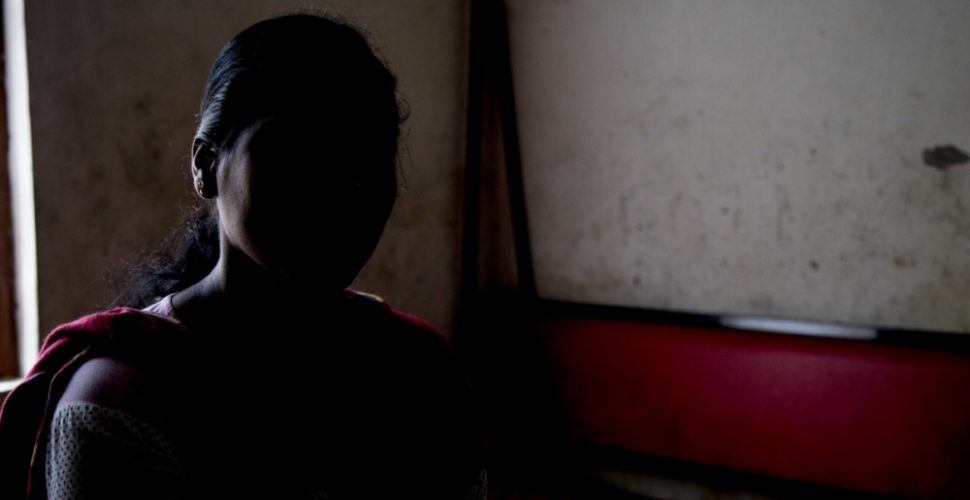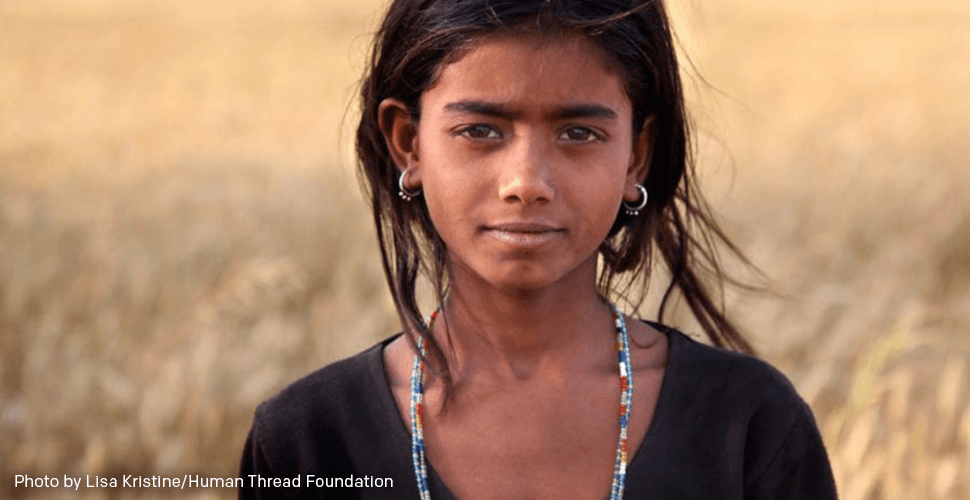
Anne Marie called her home “the abandominium” – an abandoned building without heat or lights – to make it sound more posh. She told me that the man who said he loved her turned out to be a pimp and forced her to stand on Philadelphia street corners. After a while, she couldn’t remember how many times she was beaten or raped. Anne Marie taught me what it really means to be a victim of human trafficking – to live in captivity by the invisible chains of fear and psychological control, and to endure terrible violence.
For years, she did not make her own decisions or dream her own dreams. “When you’re controlled by a man like that, when he says the sky is purple you believe him,” she said. “Even though you know it’s blue, you believe it’s purple.”
Anne Marie shared with me what it felt like to be enslaved for commercial sex – “disgraced, dirty, and disgusting,” worthless and forsaken by society. Viewed for years as a criminal instead of a victim of crime, she was arrested dozens of times and imprisoned for prostitution.
Yet as Anne Marie and too many other women and girls can attest, virtually no one chooses to sell her body to a stranger 15 to 30 times a day. At age 13, Angela ran away from home to escape family members’ alcoholic rages and abuse. After a night without shelter she got into a car with a man who promised love, then sold her for sex countless times before her 16th birthday. Rachel – whose mother was incapacitated and whose father committed suicide – said her choice at 15 years old was to sleep on a park bench and eat from a trash can or to say yes to the middle-aged man who first offered her money for a sex act. A girl that young cannot consent to sex. This is not a choice.
Their stories of isolation, brutal violence, and sadness aren’t unique or far away. Although slavery is illegal in every nation, in 2014 the Global Slavery Index estimated that there were 35.8 million slaves worldwide. Illegal profits from human trafficking – called modern slavery in other countries and defined as “compelled labor or commercial sex acts through the use of force, fraud, or coercion” – are valued at $150 billion annually.
Anne Marie and I met when she was recovering and I was volunteering at a home for female survivors of human trafficking and commercial sexual exploitation. Today her record has been expunged and she is a peer counselor helping women exit the life she once endured. She and I sometimes give community presentations together; we see each other every now and then in our state’s capitol as we advocate for better laws.
I didn’t anticipate working in the anti-human trafficking field any more than Anne Marie anticipated becoming a victim. About the time she ended up on the streets of Philadelphia, I had an encounter with a child near New Delhi.
In 2004 on a National Immunization Day (NID) trip to India, our international team visited a center for children rescued from slavery. There I met Maina, an 11-year-old girl who had been rescued two weeks earlier. She had been enslaved in a circus, gripping a rope in her teeth and twirling high in the air without a safety net. The child was also sold for sex.
At that time, I was a novice Rotarian. I had given money and helped with service projects, but hadn’t led a dime’s worth of fundraising or developed an international project. The thought of public speaking sent me running. I was also clueless about modern slavery and how to fight it.
But I knew this: Rotarians weren’t freeing children from polio only to see them enslaved. Furthermore, if we could eradicate a disease, we could do the same for a human-made issue. So I set out to learn about human trafficking and how to end it.
I wasn’t alone. Led by Mark Little, a member of the Rotary Club of Norwich St. Edmund, England, Rotarians from our NID team began learning more, speaking out for voiceless victims of child slavery, and tackling projects to help anti-slavery organizations in a handful of countries.
Within a few years, projects by members of the group and our clubs included a raid-and-rescue vehicle for a center for boys in India; support for Challenging Heights, a program that aids recovery and re-integration of children from fishing villages in Ghana; and a sustainable bio-gas system and cows that provide milk, methane for cooking, fertilizer for crops, and opportunities to learn animal husbandry at a center for girls rescued from sex slavery in India. In 2013, the growing group of Rotarians became the Rotarian Action Group Against Child Slavery (RACSRAG).
After working on early RACSRAG projects, I volunteered at the survivors center where I met Anne Marie. In 2014, I began helping at the New Day Women’s Drop-in Center, which provides services to women who are still on the streets.
Located in Philadelphia’s Kensington neighborhood under the trestles of the elevated train, the New Day center serves hundreds of women still caught in a life of exploitation. They come seeking food after a trafficker has withheld it, socks when theirs are threadbare, and a shower or warmth after spending the night in a crumbling building. As they practice making decisions over which microwave meal to eat or the color of socks to wear, they begin to reclaim control over their lives. They look for ways to find safety from threats of violence or to kick the drug addictions that keep them bound to a pimp. In a nonjudgmental environment of respect and dignity, they learn from staff members of the Salvation Army’s anti-trafficking program, who run the center, that there is help when they are ready for it.
One of the next gaps to be filled is the need for residential programs where survivors can recover and create happy, self-sufficient lives – safe, secure homes for young women who were trafficked for sex as minors but are aging out of child protective services. The Anne Maries, Rachels, and Angelas need education, job training, and trauma care designed specifically to address their complex needs as they enter adulthood in freedom.
Carol Hart Metzker is the author of Facing the Monster: How One Person Can Fight Child Slavery. A member of the Rotary E-Club of One World D5240, she is a recipient of Rotary International’s Service Above Self Award.
Visit the Rotarian Action Group Against Child Slavery’s website at https://ragas.online.
If you suspect a possible trafficking situation, call the National Human Trafficking Hotline at 1-888-373-7888 or text BeFree (233733).

Reprinted by permission from The Rotarian magazine, March 2016. Copyright ©️2016 Rotary International. All rights reserved.
.jpg?_=636886307892002120)